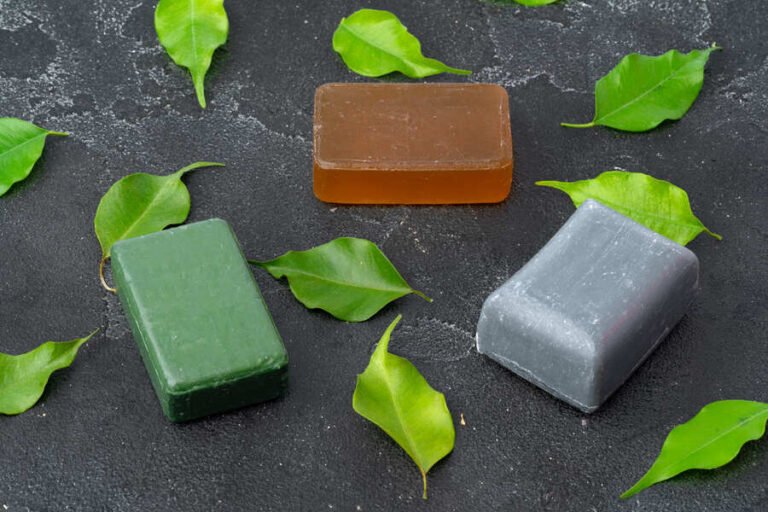Looking to switch up your style? Want to dye your synthetic hair extensions or wigs? You're in luck! This article explores the question, 'Can you dye synthetic hair?' and reveals the six best methods to achieve your desired color.
While regular hair dye won't work on synthetic hair, don't worry! There are specific techniques and colorants that can do the trick. Get ready to unleash your creativity and transform your synthetic hair.
Let's dive in and set your style free!
Key Takeaways
- Synthetic hair cannot be colored using regular hair dye.
- Synthetic hair fiber and human hair fiber are different and have different properties.
- There are specific colorants and methods that can be used to dye synthetic hair.
- Proper preparation and following instructions carefully are important for best results.
Method 1: Fabric Dye
To dye synthetic hair using fabric dye, you'll need the appropriate materials and follow specific steps for the best results. Fabric dye is one of the most effective dyes for fully coloring synthetic hair.
There are both pros and cons to dyeing synthetic hair with fabric dye. Some pros include a wide range of color options and the ability to achieve vibrant and long-lasting results. However, there are also cons to consider. Fabric dye can be messy, and if not done properly, it can lead to uneven coloring or damage to the synthetic hair.
To prepare synthetic hair for dyeing, start by washing it with a mild shampoo formulated for synthetic hair. Cover surfaces with newspaper or plastic, wear old clothes or an apron, and use gloves to protect your hands.
Following these tips will help you achieve the best outcome when dyeing synthetic hair with fabric dye.
Method 2: Acrylic Paint
If you want to change the color of your synthetic hair extensions or wig, you can try using acrylic paint. Acrylic paint can provide a temporary solution to transform the look of your synthetic hair. Here are some pros and cons, as well as tips and tricks, for dyeing synthetic hair with acrylic paint:
Pros:
- Acrylic paint is easily accessible and available in a wide range of colors, allowing you to create your desired shade.
- It's a cost-effective option compared to other dyeing methods.
- The color can be easily removed by washing, allowing you to experiment with different shades.
Cons:
- Acrylic paint may not penetrate the synthetic hair fibers as well as other dyes, resulting in a less vibrant or long-lasting color.
- The paint can make the hair feel stiff or sticky.
- It may require multiple coats to achieve the desired color intensity.
Tips and Tricks:
- Mix the acrylic paint with water or a fabric medium to create a more fluid consistency.
- Apply the paint evenly on the hair using a brush or sponge, and allow it to dry completely before styling.
- Seal the color by using a heat tool or flat iron on a low setting.
Remember to always perform a patch test on a small section of the hair before dyeing the entire wig or extension with acrylic paint.
Method 3: Permanent Marker Ink
For a quick and easy way to dye your synthetic hair extensions or wig, you can use permanent marker ink. Permanent marker ink can be a convenient option for adding color to your synthetic hair. One of the pros of using permanent marker ink is that it's readily available and affordable. You can easily find a variety of colors to choose from at your local store.
Moreover, it allows you to have more control over the color intensity, as you can layer the ink to achieve your desired shade. However, there are some cons to consider. Permanent marker ink may not provide long-lasting color and can fade over time. It may also transfer onto clothing or other surfaces.
If you prefer alternative methods for dyeing synthetic hair using unconventional materials, you can explore options like fabric dye, acrylic paint, Rit DyeMore, alcohol-based ink, or even food coloring. These methods offer different effects and may be worth considering for a unique and personalized look.
Method 4: Rit DyeMore
When dyeing synthetic hair extensions or wigs, one popular method to consider is using Rit DyeMore. This dye is specifically made for synthetic fabrics and can provide vibrant and long-lasting colors.
Here are some pros and cons of using Rit DyeMore on synthetic hair extensions or wigs:
- Pros of Using Rit DyeMore:
- It offers a wide range of colors to choose from.
- The dye is formulated to adhere to synthetic fibers, resulting in a more even and consistent color.
- It's a cost-effective option compared to other dyeing methods.
- Cons of Using Rit DyeMore:
- It may not work well on low-quality synthetic hair, resulting in a less desirable color outcome.
- The dyeing process can be time-consuming and requires careful attention to achieve the desired color.
- It may cause damage to the synthetic hair if not applied correctly.
Tips for achieving the desired color with Rit DyeMore:
- Follow the instructions on the packaging carefully.
- Conduct a strand test to determine the color outcome before dyeing the entire hairpiece.
- Use enough dye to saturate the hair thoroughly for a more vibrant color.
- Rinse the hair thoroughly after dyeing to remove any excess dye and prevent color bleeding.
Method 5: Alcohol-based Ink or Food Coloring
Try using alcohol-based ink or food coloring to dye your synthetic hair extensions or wigs. This method can be a convenient and affordable option for changing the color of your synthetic hairpieces. Alcohol-based ink offers a wide range of colors, allowing you to achieve vibrant or subtle shades. Food coloring, on the other hand, is easily accessible and can be found in most kitchen pantries.
There are pros and cons to using alcohol-based ink for dyeing synthetic hair. One advantage is that it's readily available in craft stores and online. It also tends to have a longer-lasting color compared to other dyeing methods. However, alcohol-based ink may not be as effective on certain types of synthetic hair, such as those with a hard coating or high shine. It's also important to note that alcohol-based ink can be drying to the hair, so it's essential to use a moisturizing conditioner afterward.
When comparing alcohol-based ink and food coloring for dyeing synthetic hair, both have their advantages and limitations. Alcohol-based ink offers a wider range of colors and tends to have a longer-lasting result. On the other hand, food coloring is easily accessible and can be mixed to create custom shades. However, food coloring may not be as vibrant or long-lasting as alcohol-based ink. Additionally, food coloring may stain more easily and require more frequent touch-ups.
Before dyeing your synthetic hair extensions or wigs with alcohol-based ink or food coloring, it's crucial to conduct a patch test and follow the instructions carefully. This will help ensure that you achieve the desired color while maintaining the quality and integrity of your synthetic hairpieces.
Frequently Asked Questions
Is It Safe to Use Regular Hair Dye on Synthetic Hair Extensions or Wigs?
No, regular hair dye is not safe for synthetic hair extensions or wigs. Synthetic hair cannot absorb the dye, and it can ruin the hairpiece. Instead, try alternative methods like fabric dye or Rit DyeMore for coloring synthetic hair.
Can You Mix Different Fabric Dyes to Achieve a Custom Color for Synthetic Hair?
Yes, you can mix different fabric dyes to achieve a custom color for synthetic hair. It is one of the alternative methods for dyeing synthetic hair, along with other options like acrylic paint and Rit DyeMore.
How Long Does the Color Last When Using Acrylic Paint to Dye Synthetic Hair?
To maintain the color of your synthetic hair dyed with acrylic paint, avoid heat styling, excessive washing, and prolonged exposure to sunlight. If you need to remove acrylic paint, gently scrub the affected area with a mild shampoo and warm water.
Can You Use Permanent Marker Ink to Dye Synthetic Hair Without Damaging It?
Yes, you can use permanent marker ink to dye synthetic hair, but it may damage the hair and cause it to become stiff and brittle. Using fabric dye is a better option for coloring synthetic hair.
Are There Any Specific Precautions to Take When Using Rit Dyemore to Dye Synthetic Wigs?
When using Rit DyeMore on synthetic wigs, there are important precautions to take. Properly prepare the synthetic hair before dyeing by washing it with a mild shampoo and covering surfaces to prevent stains.
Conclusion
In conclusion, while synthetic hair can't be colored using regular hair dye, there are alternative methods to achieve your desired color. By using fabric dye, acrylic paint, permanent marker ink, Rit DyeMore, or alcohol-based ink or food coloring, you can transform your synthetic hair extensions or wigs.
Remember to choose the method that suits your needs and follow the directions carefully to achieve the best results. Now, go ahead and unleash your creativity to create a whole new look for yourself!







